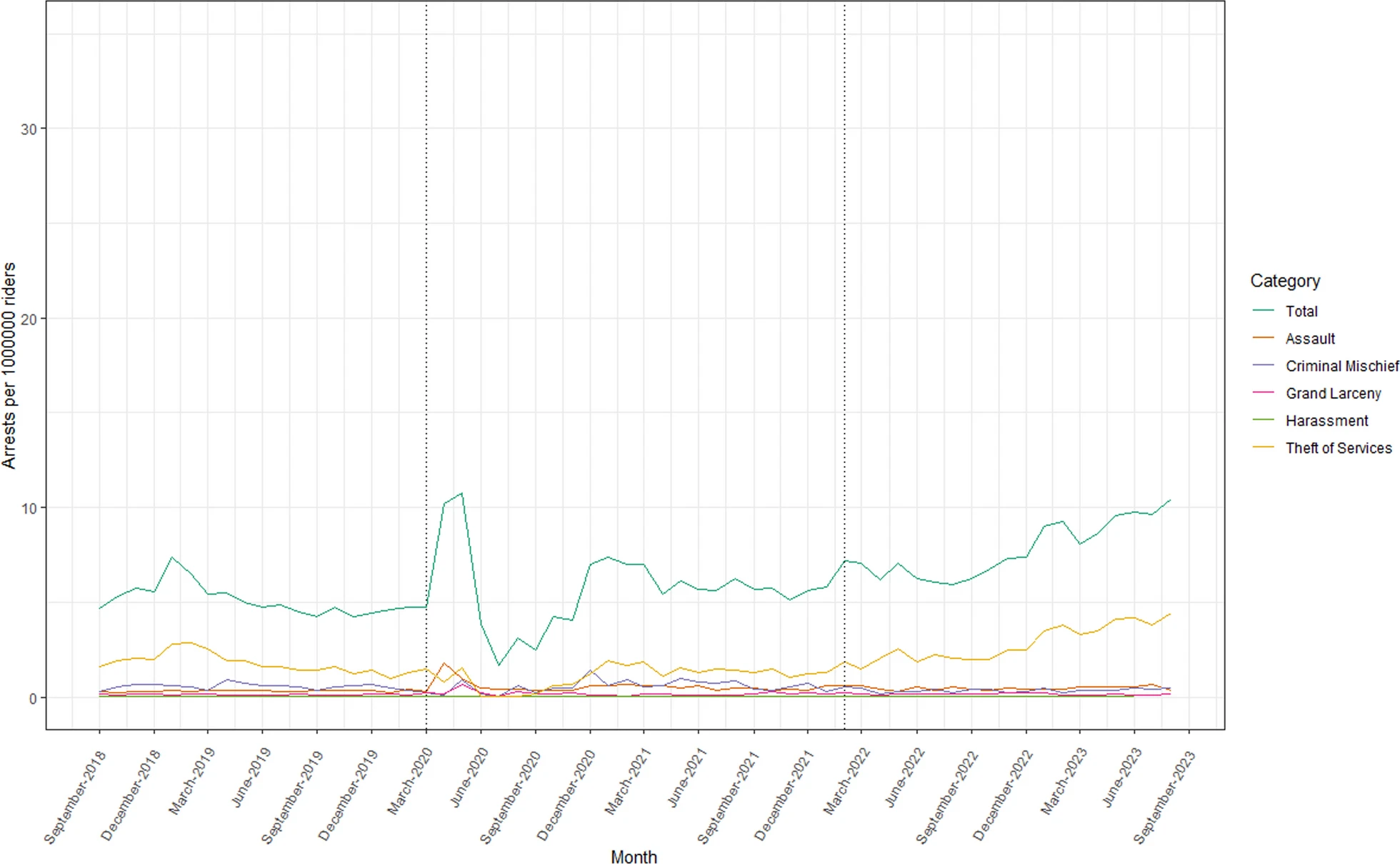
Has the New York City subway become less safe? This is the question Columbia University Mailman School of Public Health researchers sought to answer in their newest paper investigating rates of complaints to and arrests by the New York City Police Department Transit Bureau. The findings showed that anxieties related to crime on New York City transit rose following NYC’s COVID-19 pandemic state of emergency declaration in 2020, leading to declines in subway ridership. The results are published in the journal Injury Epidemiology.
The researchers were motivated by news reports indicating heightened concerns for safety when using public transit in New York City following the start of the COVID-19 pandemic. They aimed to quantify the effect of the COVID-19 pandemic on rates of crime within the subway system and to assess whether any changes were then influenced by the Subway Safety Plan, a program implemented by Mayor Eric Adams in February 2022 with stated aims of addressing concerns about safety as well as supporting those experiencing homelessness and serious mental illness.
Using publicly available data from the City and State of New York for the years 2018 to 2023, the researchers estimated changes in the rates of complaints to and arrests by the NYPD Transit Bureau per 1,000,000 subway riders per month. They also examined changes by the most common complaint and arrest types (assault, harassment, grand larceny, criminal mischief, and theft of services), as well changes in the proportion of arrests by demographic and geographic groups.

“Public transportation has so many public health benefits, including reductions in traffic crashes and air pollution, and improvements in physical health,” said Leah Roberts, data analyst in the Department of Epidemiology, at Columbia Mailman School, and first author. “Not feeling safe when riding the subway is a major threat to equity in transit access. We hoped to understand how safety might have changed with the COVID-19 pandemic and the Subway Safety Plan.”
The results showed that following the COVID-19 pandemic declaration, there was an 84 percent increase in the rate of complaints to the NYPD Transit Bureau per rider, including a 99 percent increase in the rate of complaints for assault and a 125 percent increase in the rate of complaints for harassment, aligning with news media reports of an uptick in subway-related crime. Following the Subway Safety Plan’s enactment, the authors did not find evidence of decreases in complaint rates, though there was a small increase in the rate of arrests for harassment. This finding might suggest that the Subway Safety Plan’s increased police presence has led to stronger enforcement of transit policies, though it’s unclear why this effect was specific to harassment arrests.
“It’s important to note that the subway remains a relatively low-crime area. Throughout our study period, over 100,000 subway rides occurred on average for every one complaint reported to the NYPD Transit Bureau,” noted Christopher Morrison, PhD, assistant professor of Epidemiology at Columbia Mailman, and senior author. “But there have been significant increases in rates of complaints to police by subway riders, that haven’t returned to pre-pandemic levels.”
Another notable feature of the authors’ findings was a decrease in the proportion of arrests for individuals racialized as White and the proportion of arrests in the borough of Manhattan following the Subway Safety Plan’s enactment. Because there was not an absolute decrease in arrest rates during this period, this shift may suggest changes in the geographic distribution of transit policing throughout the city, rather than reductions in policing within Manhattan.
“We’d like to better understand the changes we’re seeing in the demographic and geographic composition of individuals arrested. We know that recent statements by the MTA and law enforcement have indicated that they’re pursuing an approach of strong fare enforcement, which they hope will lower rates of more serious crime in the subway system,” stated Morrison, who is also affiliated with the School of Public Health and Preventive Medicine at Monash University, Australia. “Though it may take more time for this strategy to have the intended effect, our analysis didn’t find measurable decreases in rates of any complaint or arrest type. We also need to consider potential unintended consequences of this strategy, since we know a larger police presence and stronger enforcement doesn’t make all subway riders feel safer. Other approaches to improving safety on transit, such as wait time reductions and improvements to station cleanliness could have better impacts for public health and public safety.”


